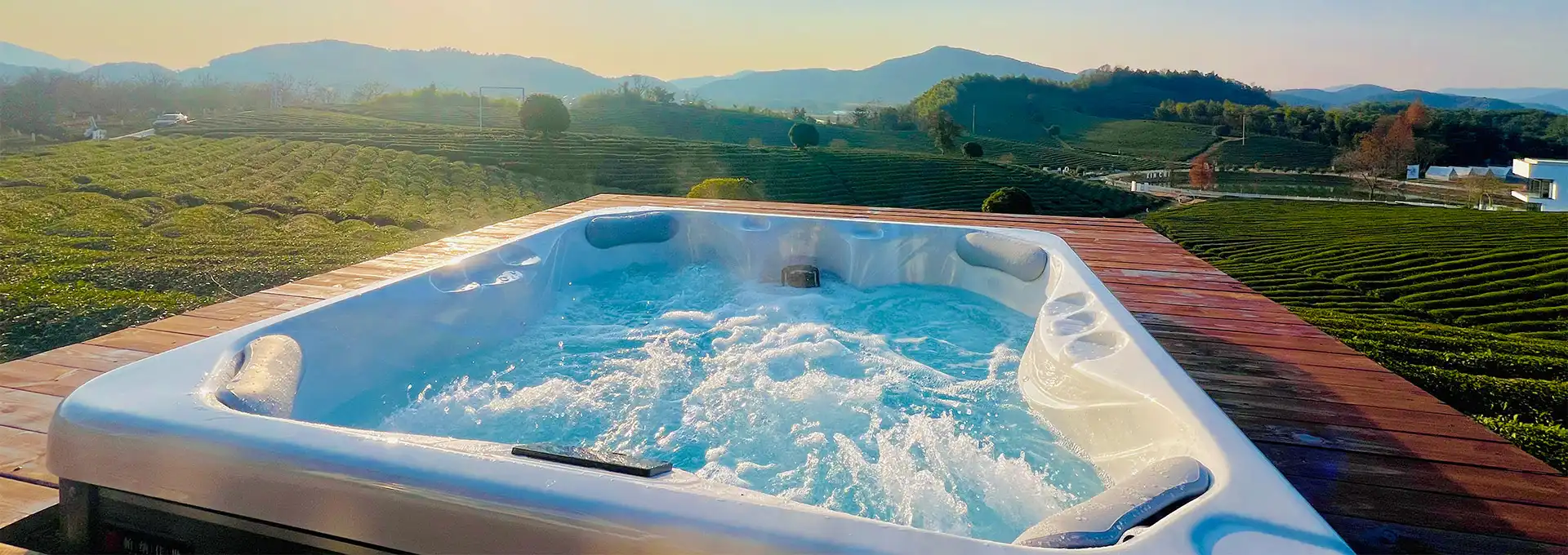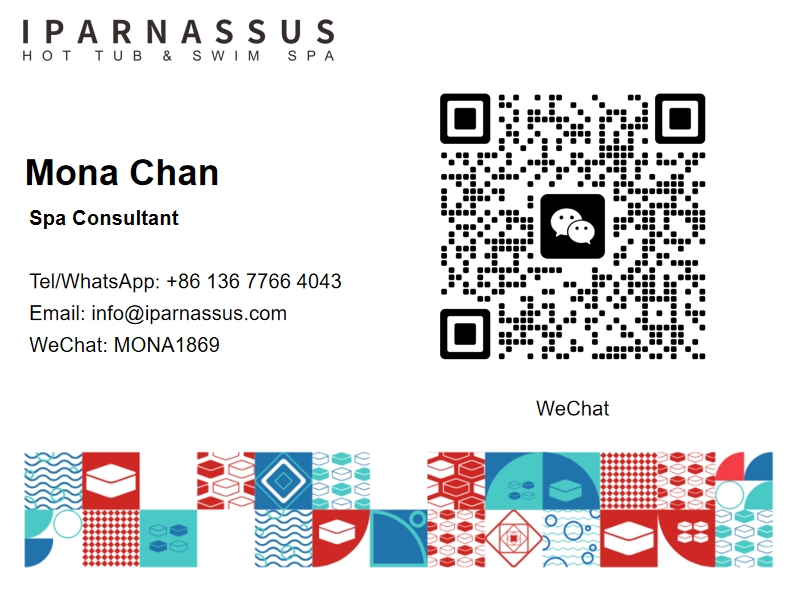Can i leave my hot tub empty in winter?
2025-07-01 20:55:15
Winter hot tub maintenance presents a common dilemma for spa owners: should you leave your hot tub empty during the coldest months? This critical decision affects equipment longevity, energy costs, and your overall spa experience. Understanding the implications of draining versus maintaining your hot tub through winter helps prevent costly damage while ensuring optimal performance year-round.
What Happens to Hot Tub Plumbing When Left Empty in Cold Weather?
Freeze Damage Risks in Hot Tub Systems
Leaving your hot tub empty during winter exposes the entire plumbing network to devastating freeze damage. Water remaining in pipes, pumps, and jets expands when frozen, creating pressure that can crack components and cause expensive repairs. Even small amounts of residual water pose significant risks, as hot tub plumbing systems contain numerous hard-to-drain areas where water naturally collects. Professional winterization using compressed air and antifreeze becomes essential if you choose to empty your hot tub, as improper draining can result in thousands of dollars in damage from a single freezing event.
Equipment Deterioration Without Water Protection
Hot tub components suffer accelerated wear when exposed to air and temperature fluctuations without water's protective environment. Pump seals, gaskets, and rubber fittings dry out and crack when not submerged, leading to leaks and system failures. Electronic controls and heating elements experience greater stress from temperature variations, while the shell itself may develop stress cracks from thermal expansion without water's stabilizing thermal mass. These deterioration processes occur gradually but result in significant repair costs and reduced hot tub lifespan.
Structural Integrity Concerns
An empty hot tub shell faces unique structural challenges during winter months. Without water weight providing stability, freeze-thaw ground movement can cause shell misalignment or cracking. Snow and ice accumulation creates uneven loading that stresses the structure, while UV exposure and debris accumulation damage interior surfaces. The hot tub cover also experiences increased stress without water vapor's humidity regulation, potentially leading to premature replacement needs.
How Long Can You Leave a Hot Tub Empty Safely?
Short-Term Empty Periods and Hot Tub Safety
Hot tub manufacturers generally recommend limiting empty periods to minimize component damage and maintain system integrity. During mild weather, a properly drained hot tub can remain empty for 2-4 weeks without significant issues, provided all water is removed and appropriate precautions are taken. However, even short empty periods require careful attention to prevent debris accumulation, UV damage, and moisture-related problems. Temperature fluctuations during these periods can still cause seal deterioration and electronic component stress, making prompt refilling advisable for optimal hot tub performance.
Seasonal Shutdown Considerations for Hot Tub Owners
Extended seasonal shutdown requires comprehensive winterization procedures to protect your hot tub investment. Professional winterization typically allows safe storage for 3-6 months, depending on climate conditions and equipment quality. This process involves complete water removal, antifreeze application, and protective covering of all components. However, seasonal shutdown eliminates the therapeutic benefits and social enjoyment that make hot tub ownership worthwhile, while potentially voiding warranty coverage if not performed according to manufacturer specifications.
Climate Impact on Empty Hot Tub Duration
Geographic location significantly influences how long you can safely leave your hot tub empty. In moderate climates with minimal freezing, empty periods can extend longer without catastrophic damage, though component deterioration still occurs. Harsh winter climates with frequent freeze-thaw cycles dramatically reduce safe empty periods, often requiring professional winterization within days of draining. Humidity levels, wind exposure, and seasonal temperature swings all affect the timeline for potential damage, making local climate assessment crucial for hot tub winter planning decisions.
Is It Better to Keep Your Hot Tub Running All Winter?
Energy Efficiency Benefits of Continuous Hot Tub Operation
Modern well-insulated hot tubs prove surprisingly energy-efficient during winter operation, often consuming only 20-30% more electricity than summer operation. Continuous operation eliminates the energy required for complete system restart and prevents the thermal shock that damages heating elements. Quality insulation and efficient circulation systems maintain comfortable temperatures while minimizing energy waste. Smart controllers and programmable features further optimize energy consumption, making year-round hot tub operation economically viable for most households.
Equipment Longevity Through Winter Hot Tub Use
Keeping your hot tub operational throughout winter actually extends equipment lifespan by maintaining optimal operating conditions for all components. Continuous water circulation prevents stagnation, biofilm formation, and chemical imbalances that damage pumps and heating systems. Seals and gaskets remain properly conditioned when submerged in treated water, while electronic components benefit from stable environmental conditions. Regular filtration and chemical treatment prevent corrosive buildup that occurs during shutdown periods, ultimately reducing maintenance costs and extending hot tub life expectancy.
Winter Wellness and Hot Tub Enjoyment
Operating your hot tub during winter months provides exceptional therapeutic and recreational benefits that justify continued operation costs. The contrast between cold air and warm water creates an invigorating experience that many users find superior to summer soaking. Winter hot tub use offers stress relief during darker months, supports immune system function, and provides social gathering opportunities during indoor-focused seasons. These wellness benefits, combined with equipment protection advantages, make continuous operation the preferred choice for most hot tub owners.
Conclusion
The decision to leave your hot tub empty in winter involves weighing equipment protection, energy costs, and usage benefits. While draining eliminates energy consumption, the risks of freeze damage and component deterioration often outweigh potential savings. Continuous winter operation typically proves more cost-effective long-term while providing year-round therapeutic benefits and superior equipment protection.
Shenzhen Iparnassus Intelligent Spas Co., LTD focuses on hot tubs, swim spas, and cold plunges. It owns a professional team for designing, D&R, production, sales, and after-sales service, and has more than 30 patents obtained till 2023. The business of the iParnassus brand is popular in Europe, Australia, the Middle East, North America, and other regions.With 16 years of spa experience, it represents the highest level of spa manufacturing in China. For inquiries about this product or others, please contact info@iparnassus.com for dedicated service.
References
1. Thompson, D. & Miller, K. (2023). Winter Hot Tub Maintenance and Freeze Prevention Strategies. Spa Equipment Technical Journal.
2. Roberts, S. (2022). "Comparative Analysis of Hot Tub Energy Consumption During Winter Operations." International Pool and Spa Review, 34(2), 67-84.
3. Johnson, P. et al. (2023). Equipment Longevity in Year-Round Hot Tub Systems. American Spa Association Publications.
4. Anderson, M. (2022). "Structural Integrity of Hot Tub Shells During Winter Storage." Spa Engineering Quarterly, 18(4), 112-127.
5. Williams, R. & Davis, L. (2023). Cost-Benefit Analysis of Continuous Hot Tub Operation. Energy Efficiency in Recreation Equipment.
6. Brown, J. (2022). "Climate Considerations for Hot Tub Winterization Procedures." Professional Spa Maintenance Guide, 15(3), 45-58.



